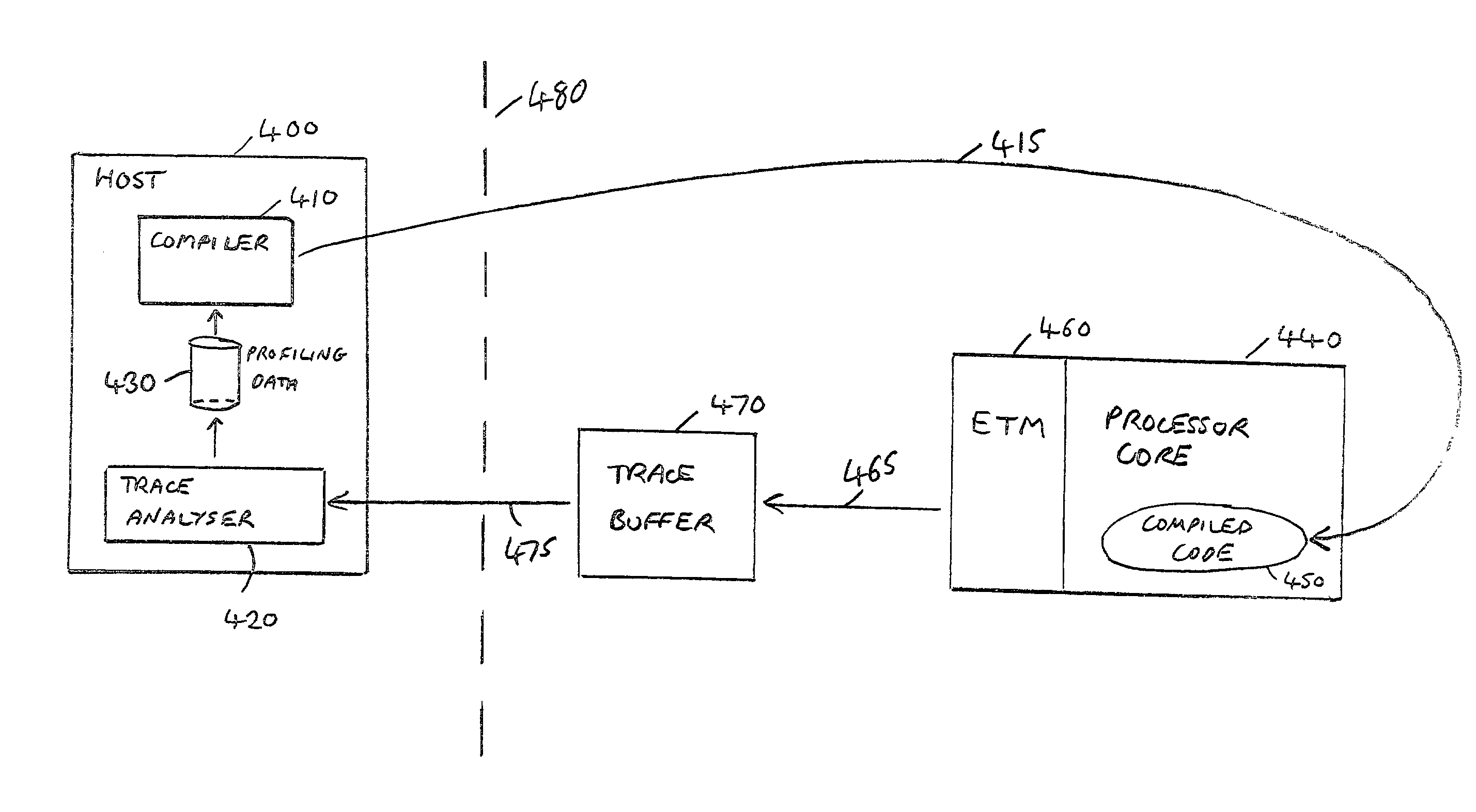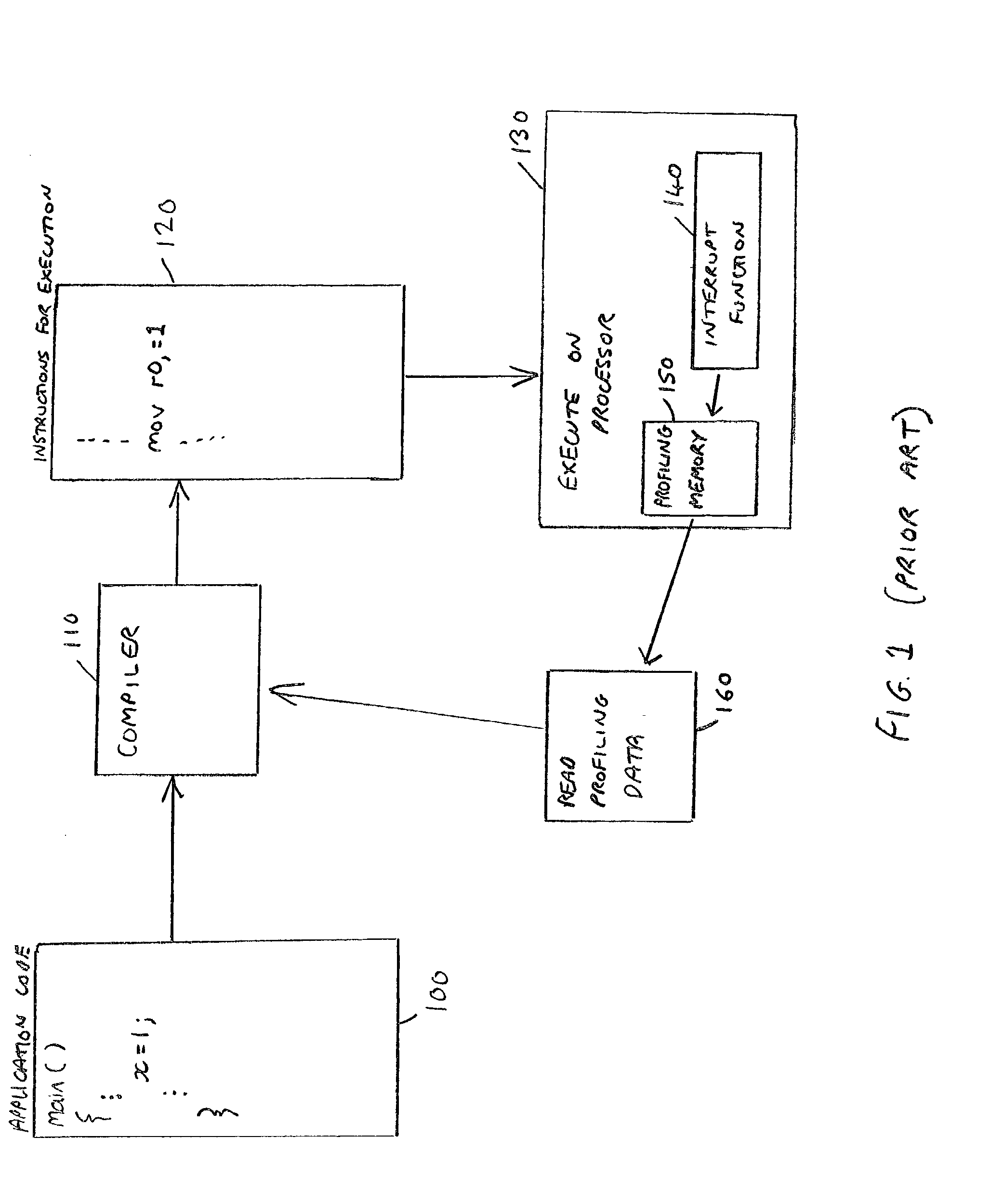Compilation of application code in a data processing apparatus
a data processing apparatus and application code technology, applied in hardware monitoring, specific program execution arrangements, program control, etc., can solve the problems of materially altering the instruction sequence, affecting the accuracy of information collected, and altering the behaviour of the code,
- Summary
- Abstract
- Description
- Claims
- Application Information
AI Technical Summary
Benefits of technology
Problems solved by technology
Method used
Image
Examples
Embodiment Construction
[0045] FIG. 1 is a diagram schematically illustrating a sample based profiling technique for generating profiling information for use in FDO of code generated by a compiler. As shown in FIG. 1, the application code 100 is passed through a compiler 110 in order to generate a sequence of instructions 120 for execution. The compiler 110 will typically be formed as software to be executed on a processor, which may or may not be the same processor as is intended to execute the sequence of instructions 120. As shown in FIG. 1 by way of example, if part of the application code specifies that a parameter, in this example parameter "x" is to be set equal to 1, then this may result in the compiler 110 generating an instruction to set the value of a particular register to 1. Within the ARM instruction set developed by ARM Limited of Cambridge, England, this would typically be done by way of a "MOV" instruction, which is arranged to move a specified value into a register, in the example illustr...
PUM
 Login to View More
Login to View More Abstract
Description
Claims
Application Information
 Login to View More
Login to View More - R&D
- Intellectual Property
- Life Sciences
- Materials
- Tech Scout
- Unparalleled Data Quality
- Higher Quality Content
- 60% Fewer Hallucinations
Browse by: Latest US Patents, China's latest patents, Technical Efficacy Thesaurus, Application Domain, Technology Topic, Popular Technical Reports.
© 2025 PatSnap. All rights reserved.Legal|Privacy policy|Modern Slavery Act Transparency Statement|Sitemap|About US| Contact US: help@patsnap.com



